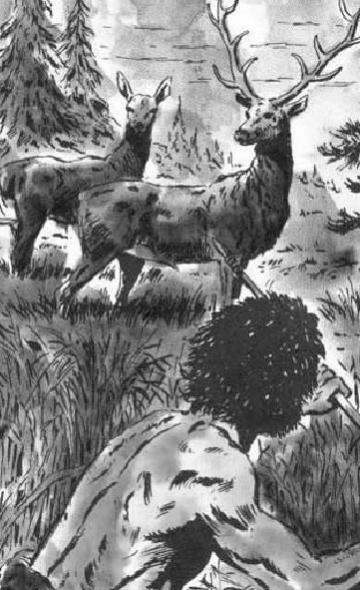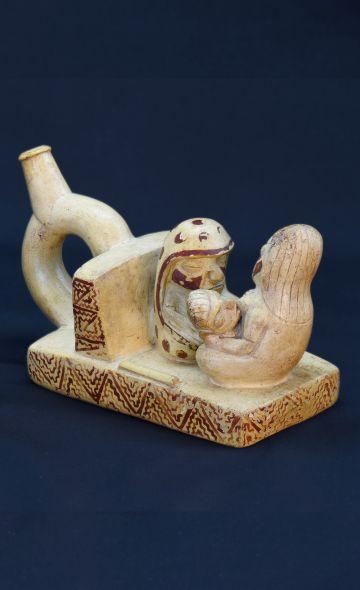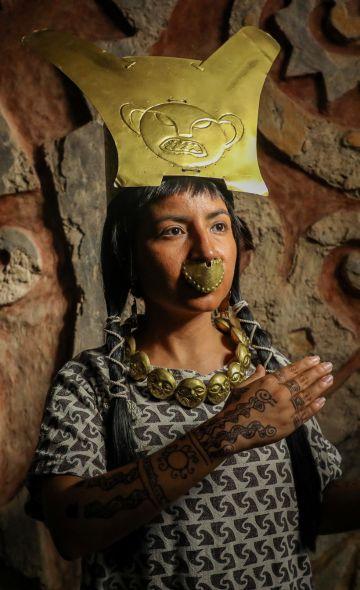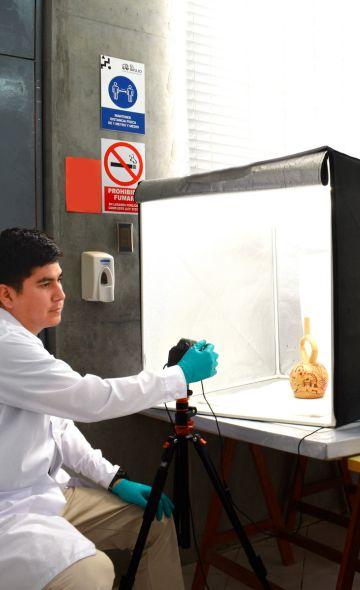- Visitors
- Researchers
- Students
- Community
- Information for the tourist
- Hours and fees
- How to get?
- Visitor Regulations
- Virtual tours
- Classic route
- Mystical route
- Specialized route
- Site museum
- Know the town
- Cultural Spaces
- Cao Museum
- Huaca Cao Viejo
- Huaca Prieta
- Huaca Cortada
- Ceremonial Well
- Walls
- Play at home
- Puzzle
- Trivia
- Memorize
- Crosswords
- Alphabet soup
- Crafts
- Pac-Man Moche
- Workshops and Inventory
- Micro-workshops
- Collections inventory
- News
- Researchers
- A different world. The Chicama Valley in the context of the first human communities 15,000 years ago.
News
CategoriesSelect the category you want to see:
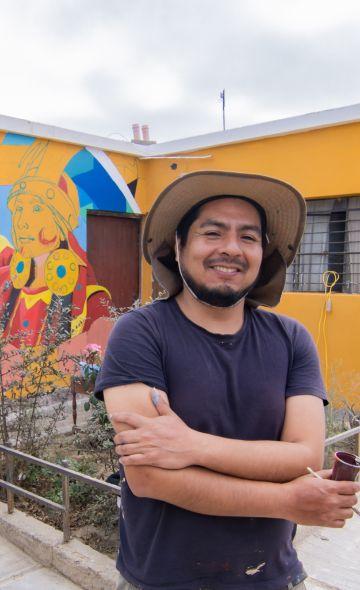
Magdalena de Cao to Once Again Host an International Mural Art Gathering ...
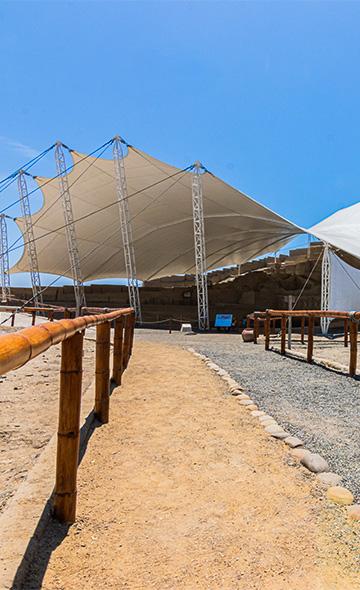
Explore El Brujo Through Virtual Tours: Culture and History at a Click ...
To receive new news.
By: Augusto Bazán Pérez
Augusto Bazán Pérez
Wiese Foundation | El Brujo Archaeological Complex
Director of Investigations
The Central Andean territory, which is in large part present-day Peru, was populated by human beings who were identical to us. The evolutionary process of our species took place on other continents, not our own, which means that the first people to arrive to the American continent were biologically just like us today. There is a lot of controversy over when the first human beings arrived and where they came from, but there is a certain notion that the process would have started some 36,000 years ago and concluded some 15,000 years ago.
It is not known exactly when the first human beings arrived to territory of what is now Peru, but the first evidence of human occupation dates to the Late Pleistocene, between 15,000 and 10,000 years before the present. The Pleistocene is a division of the geological temporal scale that belongs to the Quaternary Period; within this, the Pleistocene is immediately before the Holocene, the period in which we currently find ourselves.
The oldest evidence of human occupation in Peru is found at Cueva de Guitarrero (highlands of Ancash), Pikimachay (Ayacucho), Lauricocha (Huánuco), and Chivateros (Lima). The Chicama Valley is particularly rich in terms of this type of early evidence. Two complexes from the end of the Pleistocene have been recorded: the first vestiges of Huaca Prieta and the Paijanense Complex (Chauchat et al. 2006; Dillehay 2017; Dillehay et al. 2012). However, to understand the context of the first social groups it is important to understand what the world that our oldest ancestors arrived to was like.
The climate, water, and sea
The Late Pleistocene corresponds to a period when temperatures began to rise overall (both atmospheric and oceanic temperatures), leading to the end of the last ice age. Fifteen million years ago, the shore of the sea was approximately 30 km to the West of the current shore, and approximately 100 m below it. As the climate warmed and the ice melted, the sea level rose by way of rivers and rains that were much more constant than they are today, so that 5,000 years later, approximately 10,000 years ago, the new shore was 10 km from the current one and approximately 40 m below the current sea level (Briceño 2010; Dillehay et al. 2012).
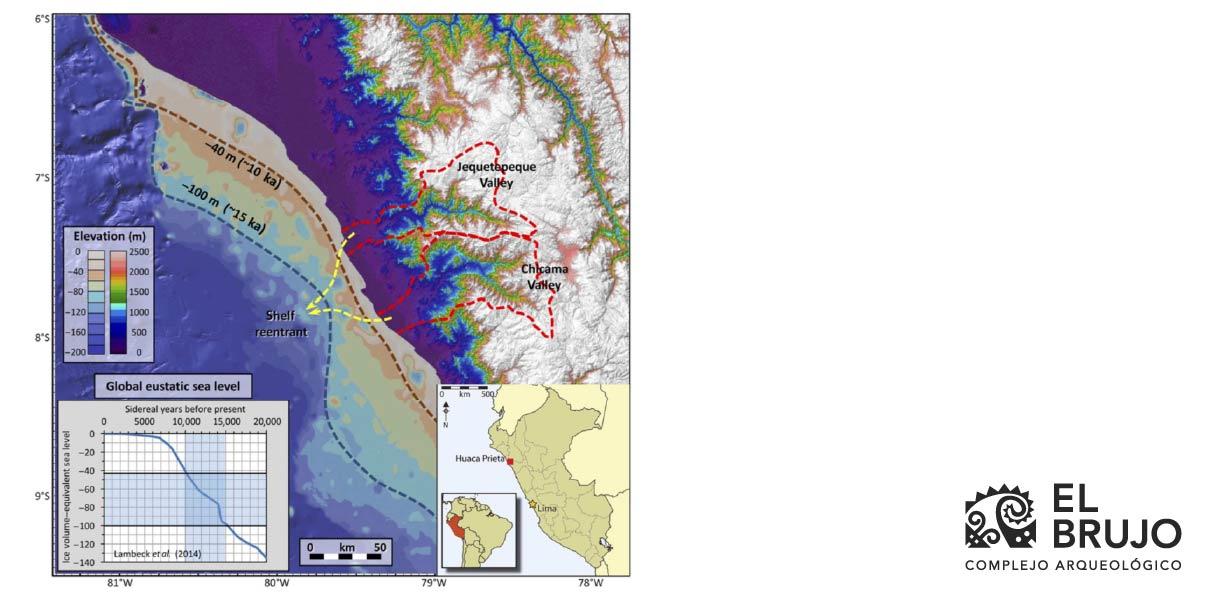
Figure 1. The ancient seashores. 15,000 years ago, the shore of the continent was located along the dashed blue line, and 10,000 years ago it was located along the dark red line. Taken from (Dillehay et al. 2017: Fig. 1).
The ancient shore
If the sea was further out, then the first human beings encountered a much wider coast than the thin fringe that we have today. The ancient coast was, then, not only larger, but also contained countless wetlands, swamps, and lagoons, fed by the overflowing of the rivers, the rains, and the marine storms that threw water from the sea onto the land. This large coastal fringe full of water sources was bordered by algarrobo trees and cactuses, which can survive in saline ecosystems such as that described and whose fruits were edible. It consisted, then, of an environment with much grass, full of trees along long sequences of sources of water, including freshwater, semi-fresh water, and salt water (salobres). This habitat produced a large quantity of food sources from the fresh-, salt-, and mixed- waters, which the early inhabitants consumed opportunistically (Dillehay et al. 2017; Netherly and Dillehay 2017).
The interior valley
In the interior of the valley, far from the sea, the vegetation was probably thicker and more varied. It was a relatively open landscape, a dry forest based on algarrobos (Prosopis sp.) and associated species, which would have been an adequate habitat for white-tailed deer (Odocoileus virginianus) and scrub blackbirds (Dives warszewiczi), among other species (Dillehay et al. 2017). The variation in sea level caused more rains than there are in the current dry forest today, generating greater humidity. Proof of this situation is found in the presence of land snails (Scutalus sp.), species that need humidity to survive, in zones that are currently desert. (Briceño 2010).
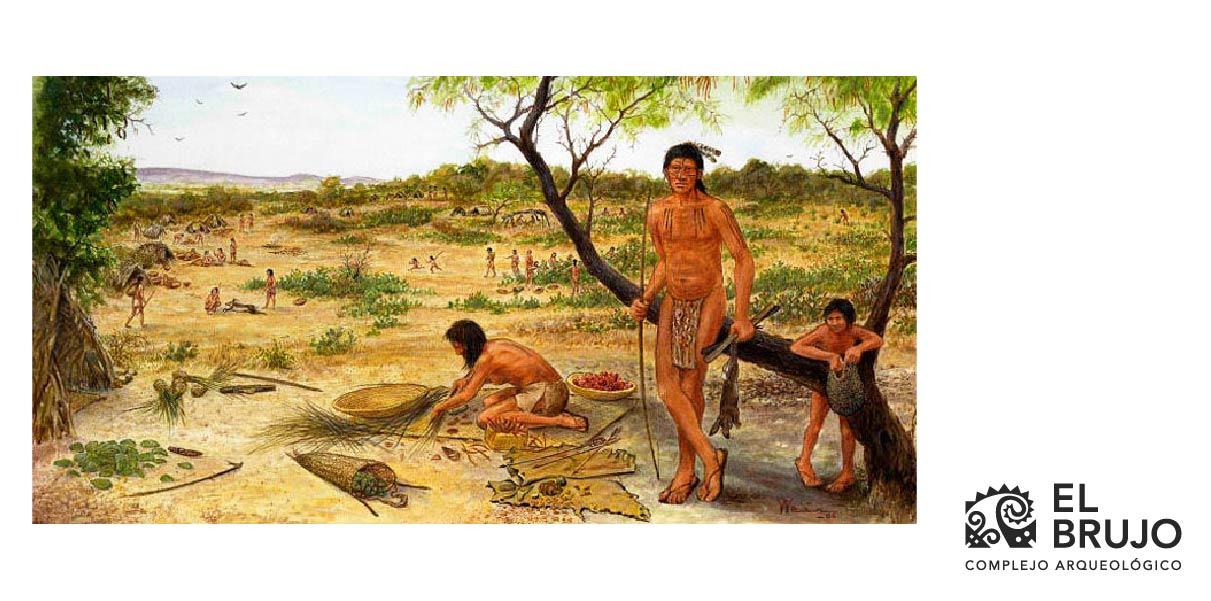
An idea of how the valley would have looked before the appearance of agriculture. https://historiadelperu.info/wp-content/uploads/2019/07/primeros-pobladores-del-peru-1.jpg
The paleofauna
Before the Holocene, there were large animals such as mastodons and ancient species of camelids, horses, sloths, and other animals (Chauchat et al. 1998). All of these animals were much larger than their current versions. There is great debate about the coexistence of this ancient fauna and the first human groups. Although it is difficult to determine the interaction between these groups in the Peruvian territory, recent dates for the first human groups at Huaca Prieta, from 14,000 years ago (Dillehay 2017; Dillehay, Bonavia, S. Goodbred et al. 2012), are from around the time of the extinction of this paleofauna, which occurred between 26,000 and 15,000 years before the present. Evidence from La Cumbre, in the Moche Valley (Ossa and Moseley, Michael 1971), and from Pikimachay, in Ayacucho (although much debated), are in line with this (Yataco 2011).
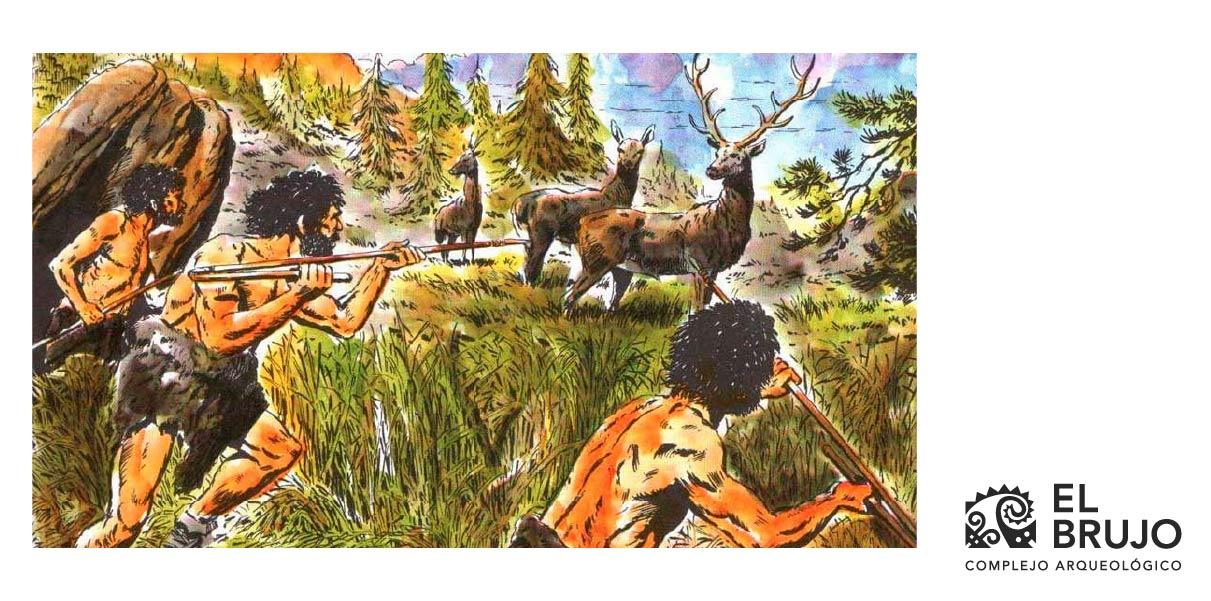
Hunting animals at the end of the Pleistocene. https://historiadelperu.info/wp-content/uploads/2019/07/hombre-Pacaicasa.jpg
Final Words
Before understanding the first human groups and their culture, it is necessary to understand the environment that they arrived in and to which they had to adapt. The summary presented here is a very general panorama of the geographic and environmental context that our oldest ancestors in the national territory had to face, through which they developed adequate and autonomous subsistence strategies, without influence from the old world, to be able to develop successful sociopolitical systems that we will look at another time.
Researchers , outstanding news


